If you’re looking to put together a hi-fi system for the first time, you might be wondering where exactly to start.
In this guide, we’ll show you how to build a hi-fi system. We’ll explore how to match the right amp, speakers, and other components, ensuring the system suits the room’s capabilities which, in turn, establishes the perfect harmony between the hi-fi and the space. Additionally, we’ll discuss why selecting high-quality RCA interconnect cables can make a significant difference.
If you already own a hi-fi system and want to maximise its performance, we also cover setup, speaker positioning, and when to rely on a room correction EQ system.
In a hurry?
Here are the basics you need to know when building a hi-fi system:
- Planning: Work out where your hi-fi system will sit, whether you’ll need hi-fi furniture, and what cable lengths you need
- Speakers: Choose between floorstanding, bookshelf, or standmount speakers
- Amplifier: Keep the stereo amplifier’s price within 40% of the speaker’s price
- Source: Understand how you want to use the hi-fi system – will you be streaming, using a turntable, or using a CD player?
- Enjoy!
How to build a hi-fi system
1. Decide a budget
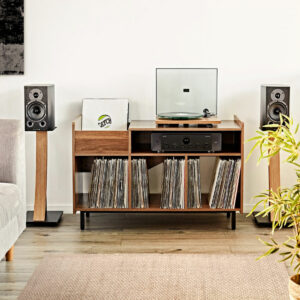 Determining your budget is a crucial step, as costs can escalate quickly in the hi-fi world if you don’t have a rough price range in mind.
Determining your budget is a crucial step, as costs can escalate quickly in the hi-fi world if you don’t have a rough price range in mind.
Pricing can be tricky with hi-fi systems, but the principle of ‘less is more’ often holds true. Higher-end hi-fi systems tend to have fewer connectivity options, focusing instead on delivering superior audio quality.
However, there’s far more to a hi-fi system than most people realise. You might think a pair of speakers and an amplifier are all that’s required, but, actually, you might also need a hi-fi cabinet, a turntable, and a phono box for your hi-fi system to make music.
Most hi-fi systems follow a straightforward setup: a pair of speakers, an amplifier, and a streamer or player, all connected with appropriate cables.
In terms of features, you might be able to simplify your setup, as some integrated stereo amplifiers include built-in DACs, streamers, and phono stages. Additionally, some modern network receivers and micro hi-fi systems come with a built-in CD player.
Determining the level of hi-fi system you need will help you decide on a realistic budget based on genuine expectations, allowing you to create a system that sounds fantastic within your price range.
2. Assess your room
Before building your hi-fi system, consider where the system will be located. If you’re planning a hidden setup, you’ll need to think about control options, as standard IR remotes may not work. In this case, an app-based control system could be the perfect solution.
When measuring your room, you might also find that the floorstanding speakers you were set on are too large, and, instead, bookshelf or standmount speakers are required. This might mean you’ll also need a pair of stands you hadn’t thought about.
If you do opt for floorstanding speakers, you might want to factor some isolation feet into your budget, as these can really enhance your hi-fi system’s sound. The IsoAcoustics GAIA 3 Threaded Isolation Feet, which holds up to 34kg, are ideal for speakers on hard surfaces. They reduce any unwanted vibrations, providing a smoother, clearer sound that’s true to the natural waveform.
Sometimes, it’s not possible to have long runs of cables in your space, and if this is the case for you, you’re best off getting active speakers. These remove the need for an external amplifier altogether as they have one built in.
If you prefer to choose each component of the system separately (known as hi-fi separates), you’ll need to carefully consider the placement of your hi-fi setup.
The system will require a stable structure, such as a solid wall, to support it effectively. Freestanding hi-fi systems, windows, laminated floors, and other hard surfaces can create excessive reflections. In such cases, choosing a stereo amplifier with dedicated room correction software, like the Lyngdorf TDAi-1120, can be beneficial.
Amplifiers like the Lyngdorf use advanced software to minimise room-related issues and help realign the system’s signature sound.
The goal is to create a ‘sonic triangle,’ positioning yourself centrally two to four metres away from the speakers, with your ear level roughly one metre from the floor. The hi-fi speakers should be spaced two to three metres apart, facing the main listening position, with at least 300 mm of space around each speaker.
This setup helps create an optimal listening zone in the room, allowing you to experience a well-defined stereo image with distinct separation between the left and right speakers.
3. Choose your speakers
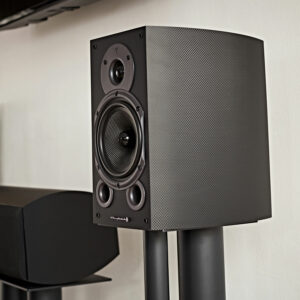 At last, we’re looking at speakers.
At last, we’re looking at speakers.
After assessing your room, you should be able to ascertain which pair of speakers will work best, whether it’s floorstanding, standmount, or bookshelf speakers.
Each hi-fi speaker brand has a signature sound.
Some hi-fi speakers sound warm and rich, while others are bright and have a bit of bite to their tone. But sound quality and tone are subjective, so you might favour one type over another – which is why booking a demo is so important.
KEF speakers, like the LS50 Meta Speakers, create a wide dispersion of sound, ideal for multiple listening positions, while B&W and Monitor Audio create a more focused sound dispersion that is directed towards the main listening position.
There are also safe hi-fi speakers from brands such as Q Acoustics and Wharfedale which do both.
4. Choosing your amplifier
If you’re using active speakers, your job with amplification is complete! However, if you have passive speakers, you’ll still need to choose a stereo amplifier.
Some of the heavyweights in hi-fi are Arcam, AudioLab, and Cyrus, known for their quintessential British hi-fi sound. If you’re looking for something different, there are many other options, including products with networking features and built-in DACs. These come in a range of sizes, from full-size separates to compact micro hi-fi systems.
You can also opt for all-in-one hi-fi systems, which often include CD playback, ideal if you’re after a one-stop solution.
One thing to keep in mind is the 40% cost rule: spending around 40% of the speaker cost on the amplifier helps prevent mismatches. This can prevent damage caused by one component being either too powerful or underpowered for the other. For instance, if your speakers cost £1,000, you should spend around £400 on the amplifier. To this end, a great stereo amplifier for affordable systems is the Yamaha A-S301.
5. CD players, turntables, and streamers
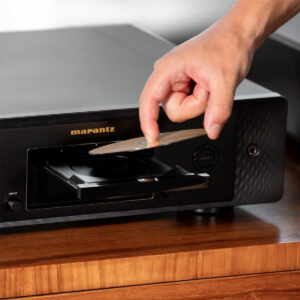 Once you’ve determined the right amplifier and speaker combination, you’ll still need other components, such as a CD player, turntable, or streamer if you want to listen to the radio or access platforms like Tidal, Spotify, or AirPlay.
Once you’ve determined the right amplifier and speaker combination, you’ll still need other components, such as a CD player, turntable, or streamer if you want to listen to the radio or access platforms like Tidal, Spotify, or AirPlay.
If you’re choosing a CD player, it will serve as a fundamental source for your amplifier, typically connected via RCA phono-to-phono cables.
Turntables are a bit more complex, as they require a phono stage. This could be built into the turntable itself – the Denon DP-400 is a good example of this – or the stereo amplifier, and you might need to activate it or use a specific input, including a ground (earth) cable.
You also have the option of adding an external phono stage. The best choice will depend on the needs of your hi-fi system, as turntables produce millivolt signals that require additional amplification to convert them into audible volt levels. If in doubt, consult the manual.
For streaming, you may be able to use your phone via Wi-Fi or Bluetooth. Some services stream directly from your phone, while others connect to a dedicated streaming hi-fi device, providing access to platforms like Apple AirPlay, Spotify, and BBC Sounds.
6. Use high-quality cables
Cables are a hotly debated topic, but it’s helpful to step back and consider their main purpose: to ensure your hi-fi system sounds as good as possible without degrading the signal. While a cable can’t make your system sound better than the capabilities of the electronics, it can help minimise any potential loss in quality.
As a general rule, allocate about 10% of your total system value to cables. This will ensure that your hi-fi system performs optimally without being held back by poor-quality connections.
But how do we define a good cable? In truth, it’s all subjective and based on performance. Digital cables work a bit differently, but high-quality digital cables help reduce errors and prevent the need for signal retransmission, which is beneficial for maintaining sound quality.
To make your decision easier when choosing cables, we’ve rounded up the best speaker cables on the market right now.
7. Room treatment
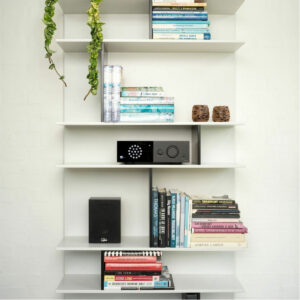 No room is perfect, which is why no two hi-fi systems sound exactly the same. This is an important consideration when planning a hi-fi system.
No room is perfect, which is why no two hi-fi systems sound exactly the same. This is an important consideration when planning a hi-fi system.
Hard surfaces can create an acoustically challenging environment, negatively affecting how your speakers perform.
To improve the listening environment, you can place acoustic treatment solutions in key areas or add soft furnishings to the room or walls.
These help reduce reflections, enhancing the acoustic quality of the room so you can hear your speakers at their best.
If you prefer not to use acoustic treatments, there’s an alternative: the Lyngdorf TDAi-1120 we mentioned earlier.
This is a dedicated stereo amplifier solution that includes sophisticated software designed to analyse your speakers’ signature and compensate for room reflections, allowing your hi-fi speakers to reach their full potential.
8. Checking the settings
If you’re using an AV receiver for your hi-fi system, you might want to experiment with its various features to see which you prefer. Some features can alter the soundstage, and it’s up to you to determine whether these changes improve the listening experience.
If you’re using an EQ room correction system, check if you have the option to use ‘Direct’ or ‘Pure Direct’ mode, which can be found on the remote control or the unit itself. This mode bypasses all room equalisation processing and sets your speakers to full range, treating them as large speakers while ignoring crossover settings.
It also removes the subwoofer from the stereo field unless specified or if you use a high-level input (learn more about the low-pass filter here). If you don’t like the result, you can easily switch back – it’s that simple to experiment.
With the Lyngdorf TDA-1120, you can fine-tune any areas where the signature may have been altered more than desired. This allows you to continue using their room correction software while creating a unique signature tailored to your preferences. You can also save these custom settings for future use.
Our tips for building a hi-fi system
1. Know what you want
Setting a budget and having realistic expectations are key to understanding what type of hi-fi system you can create, whether you’re considering an all-in-one micro system or a full-sized separate hi-fi setup.
2. Consider your speaker size
Floorstanding speakers create a larger soundstage compared to bookshelf or standmount speakers, and adding a subwoofer can enhance the lower frequencies.
3. Demo your speakers before purchasing
When visiting your local hi-fi store for a demonstration, bring both well-recorded and poorly recorded CDs. This way, you can evaluate how the system performs across a wide range of musical qualities.
4. Build your hi-fi system around your main listening position
If you didn’t plan your hi-fi system properly, you may have overlooked the importance of the main listening position. This is crucial for creating the ideal listening environment.
5. Choose your source wisely
After setting up the main listening position, choose a high-quality source to do justice to all your hard work. Hi-fi systems aren’t cheap, so you want to make the most of your investment. For a music session, try high-resolution streaming, CDs, or vinyl to get the best audio quality, while MP3s are suitable for casual listening.
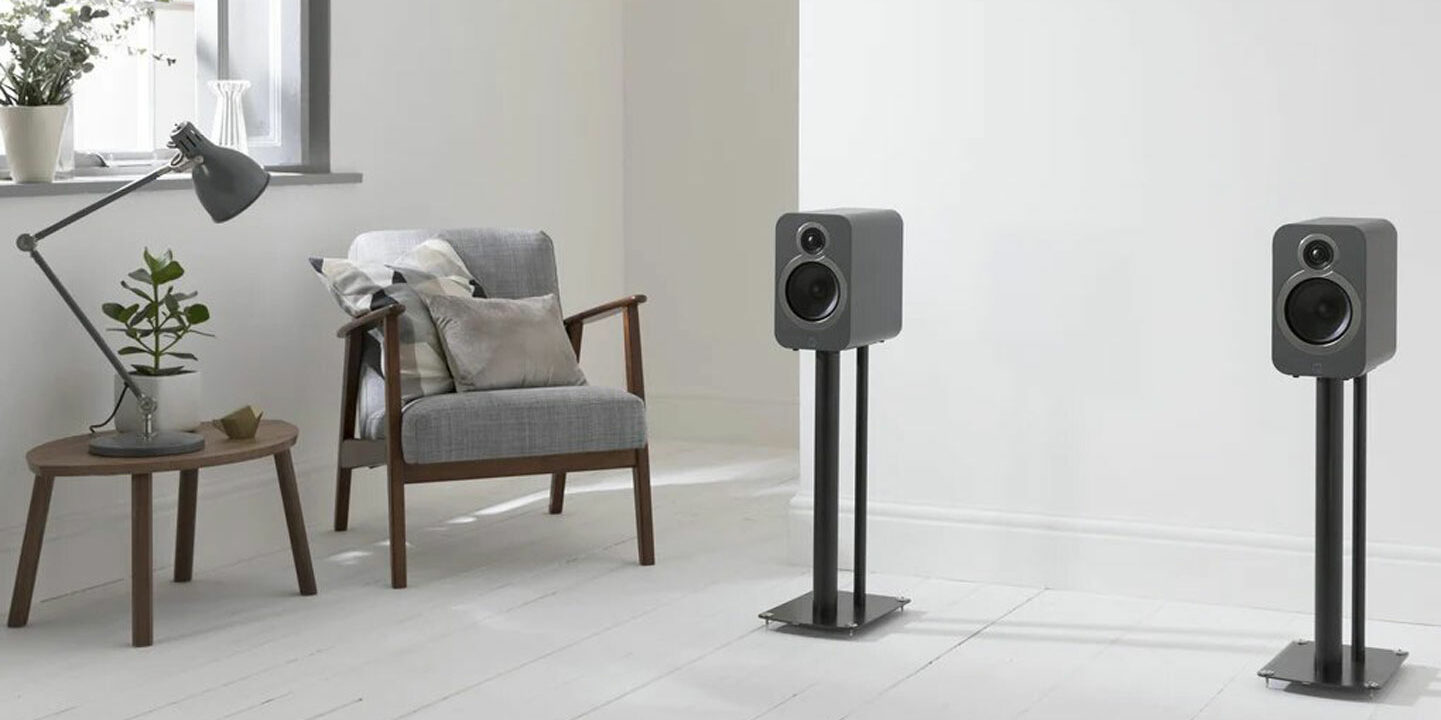
Frequently asked questions
Why are hi-fi systems so expensive?
Hi-fi systems can be expensive because they aim to create the best audio projection and listening experience possible. There’s a lot of research, development, and prototyping – not to mention high-quality components and materials – that go into a hi-fi system, which all contribute to the price.
Do I need an amplifier?
If you’re using passive speakers, you’ll need an amplifier to power them—without it, your hi-fi system won’t produce any sound. However, if your speakers are powered, either by battery or mains, they have a built-in amplifier, eliminating the need for an external one.
Are subwoofers worth it for hi-fi?
Whether or not you need a subwoofer depends on your hi-fi system’s bass response. If you feel that the bass is sufficient, you may not need one. However, if you’d like more low-end, a subwoofer can extend your system’s entire frequency range. Just be sure to take the time to set it up properly, following the 70% rule for optimal performance.
Final thoughts
We hope after reading our guide you now know how to build a hi-fi system. Remember, the most important stage is planning – once you know what speakers will work best in your space, you’ll be able to put together a great-sounding system.
Want to learn more? Check out some of our other guides:
Different Audio File Formats – Which One Is Right For You?
What is a Monoblock Amplifier? Here’s How It Compares to a Regular Amp


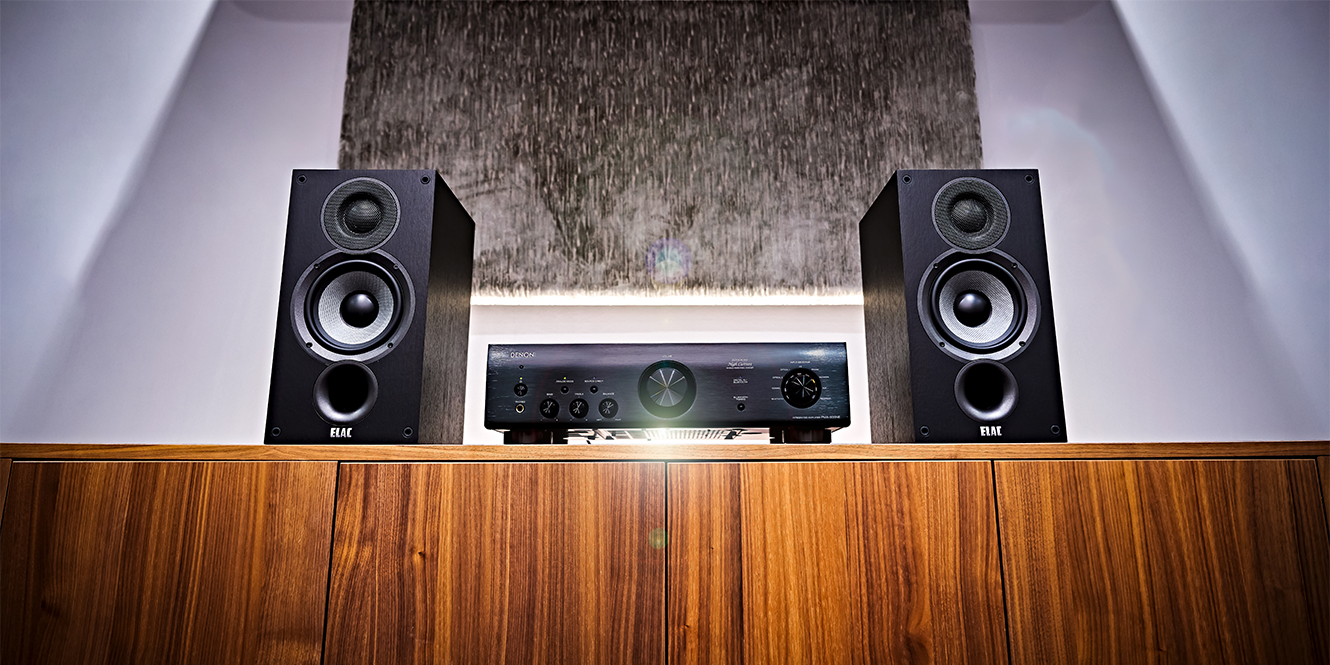
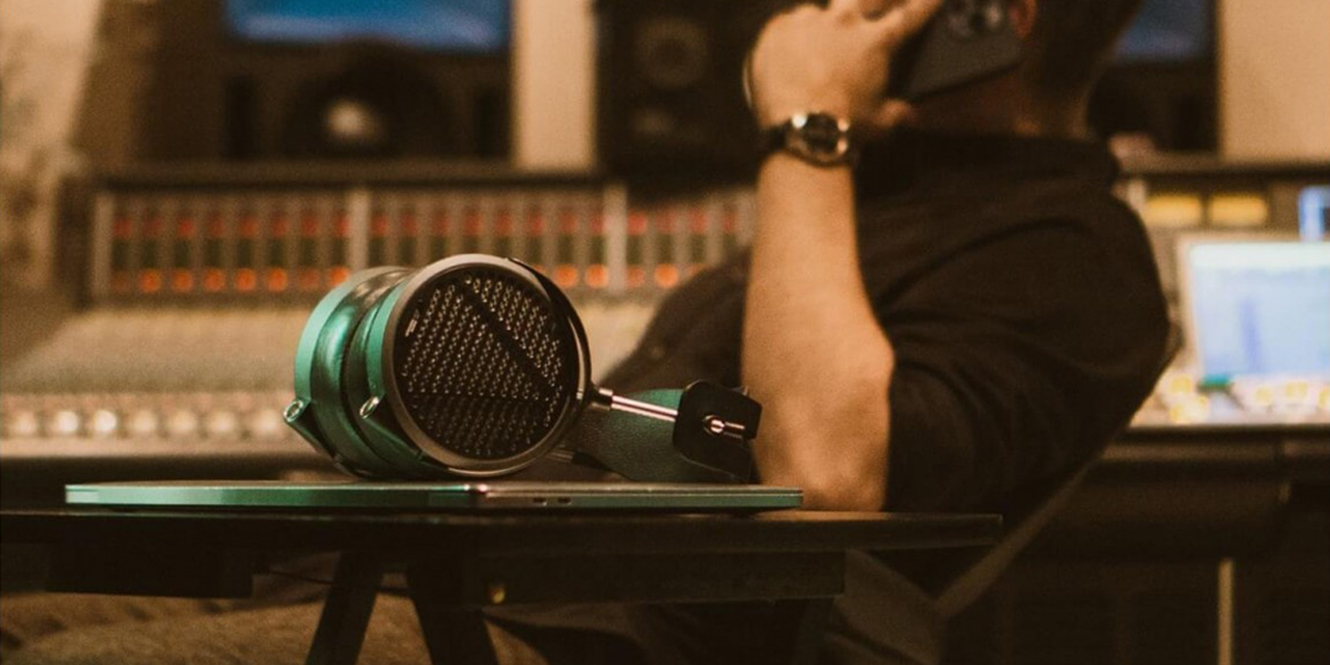

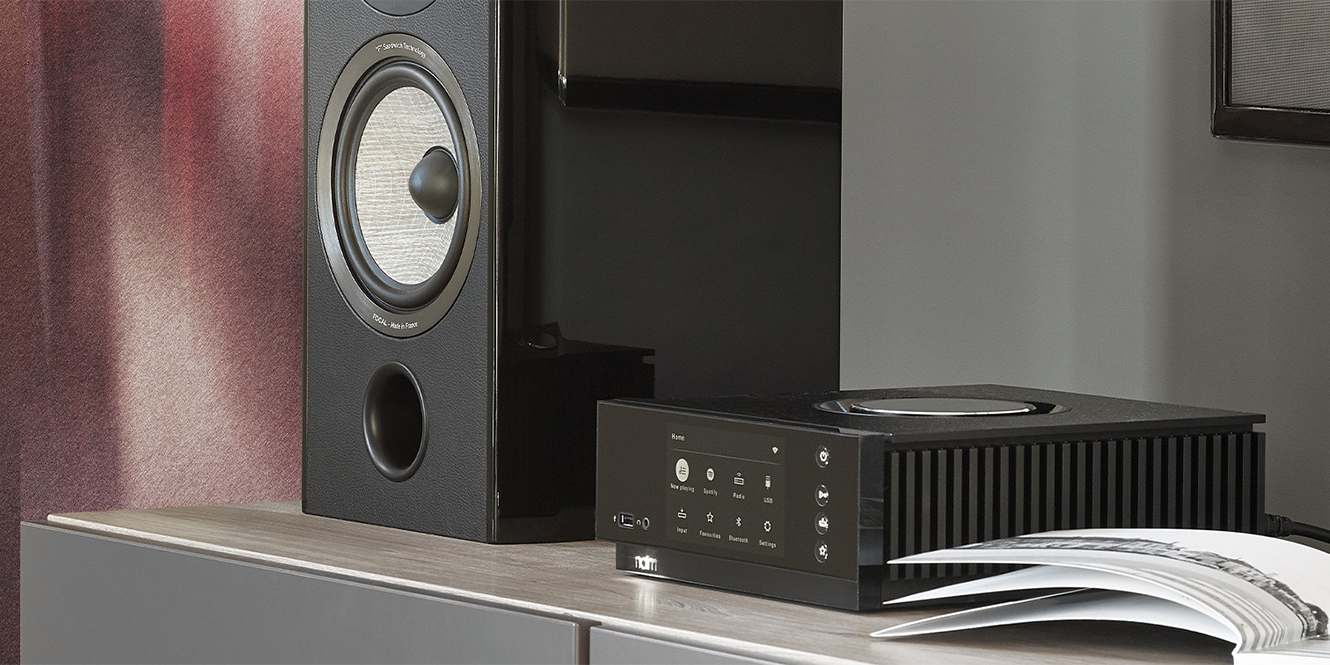
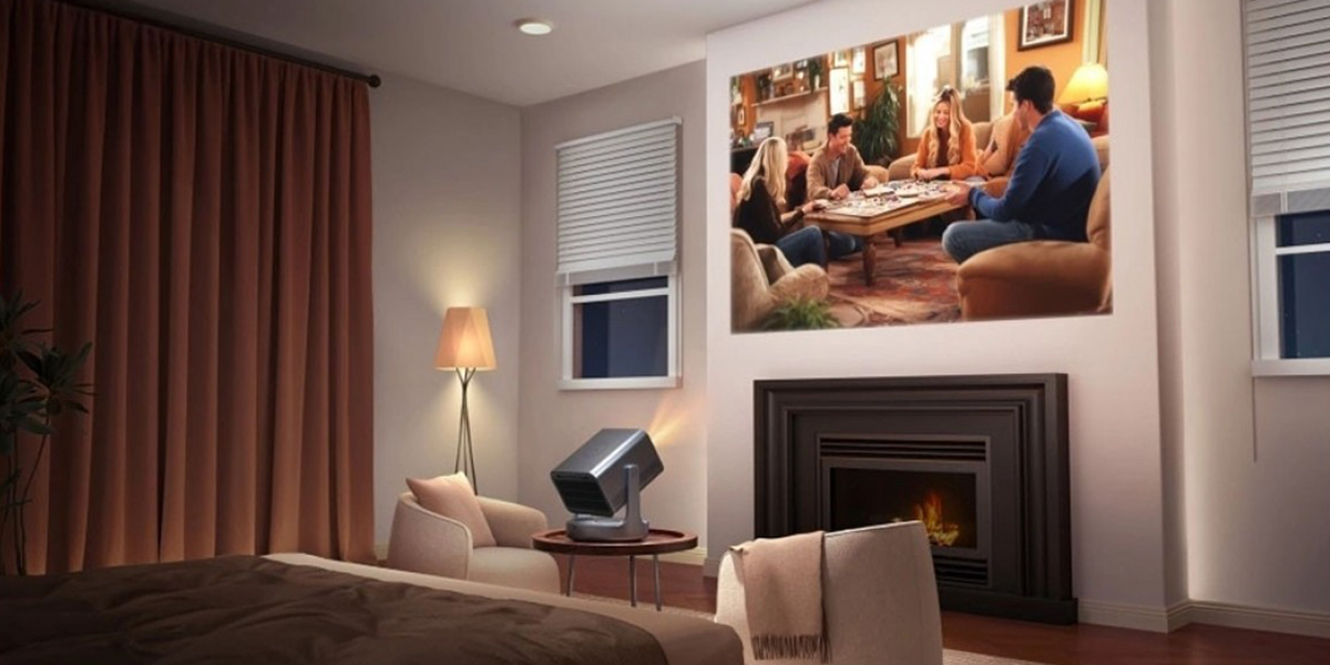






0 Comments